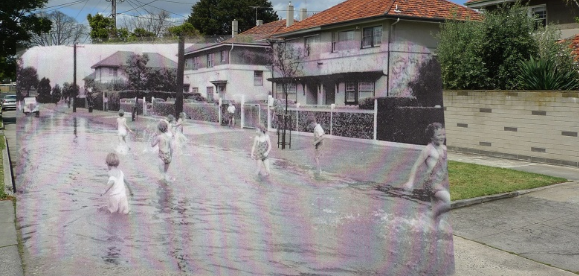Do-it-yourself and citizen-led digital heritage

Melbourne is in the midst of a new wave of thinking about how we look at the past, also known as the ‘heritage industry’.
This includes the desire to revisit, witness and represent the past.
This week, an International symposium - DigitalGLAM - being hosted in the Melbourne School of Design will bring together historians, researchers, digital designers to discuss how connectivity with history and heritage is being sustained and enhanced through the possibilities of smartphones, tablets and other digital media.
Faculty of Architecture, Building and Planning Associate Professor Hannah Lewi is one of the convenors of the DigitalGLAM conference and believes new media technologies provide powerful ways of seeing into the past.
“New media technologies, including photography and film, provide new ways of seeing into the past and visualising our shifting connections with it: think of time-travel movies and ‘then and now’ stereoscopic photography,” she said.
“Digital tools allow us to crowd-source materials and share stories and information about local communities and histories. Looking back is a constant and ongoing fascination in our cultural lives.”
A team of University of Melbourne researchers, supported by an ARC Discovery Grant, in collaboration with Deakin University, Kings College and the City of Port Phillip, has developed the PastPort heritage web-based app for Port Melbourne, an area rich in urban history.
By working with local history and heritage resources, and the Port Melbourne Historical and Preservation Society, the research team has prepared the app with historical content that can be organised under themes and tours.
The app allows prompts to ask questions about the stories and information relating to the local area.
Supporting the driving theme of the research project around ‘citizen-led heritage’ in local communities, PastPort encourages users to engage with the app by uploading their own contributions, so as to promote the sharing of recollections and historical artefacts about Port Melbourne.
“We have loaded the app with lots of items of historical content as a way of starting people off, but we are really hoping the app will take on a life of its own, with people adding their family photos, videos or other memories,” said Faculty of Architecture, Building and Design researcher Andrew Murray.
Keynote speakers include Breandan Knowlton from HistoryPin, Antony Robbins from the Museum of London and Professor Sarah Kenderdine from UNSW’s National Institute for Experimental Arts.
Major cultural institutions participating include ACMI, State Library of Victoria, Melbourne Museum, the Shrine of Remembrance, Melbourne Zoo, Public Records Office of Victoria and leading digital designers.
For more information about the Citizen Heritage Project and DigitalGLAM symposium see www.citizenheritage.com. The link to the PastPort app is available at the website www.pastport.com.au.